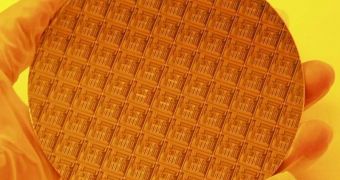The study conducted by Thomas Lummerstorfer represents a review of one of his earlier papers into the study of solid-solid interfaces with the help of infrared spectroscopy techniques, which could not be tested experimentally until now. He previously predicted that with the help of a sandwich-like optical configuration, infrared measurements could be made on thin films and solid-solid interfaces.
The development of his new optical configuration allows infrared spectroscopy on a wide range of metal and non-metal substrates and reactions taking place in the respective solid-solid interface to be monitored with increased sensitivity. Lummerstorfer is currently working in research and development for Semperit GmbH, is 31 years old, and received his PhD in chemistry in 2005, at the Vienna University of Technology. His new technique could also be used in multiple nanotechnology fields to conduct routine surface infrared measurements.
The infrared spectroscopy may provide a way to obtain new insight in the chemistry and structure of monolayers compressed between two solid surfaces. For his work, Lummerstorfer received from the Springer journal "Analytical and Bioanalutical Chemistry" the Best Paper Award 2007, it will be given a special place on the cover of the ABC paper and will also be awarded a prize in money, worth 1.000 euro, provided by Springer.
Infrared spectroscopy is being routinely used in both research and industry to make measurements, quality control and dynamic measurements. Usually, the results are processed through computers to ensure an increased accuracy, mostly due to the fact that water may absorb wavelengths in the range of interest, making data unreadable without the help of computer processing. It is widely used in organic and inorganic chemistry, such as in polymer manufacture to measure the degree of polymerization, in microelectronics and especially in the semiconductors industry.

 14 DAY TRIAL //
14 DAY TRIAL //